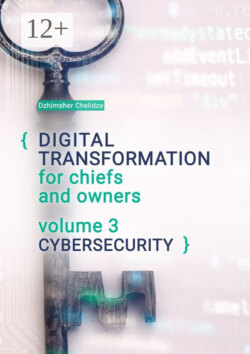Читать книгу Digital transformation for chiefs and owners. Volume 3. Cybersecurity - Джимшер Челидзе - Страница 7
Part 1. Why deal with information and cybersecurity?
Chapter 4. What happens in the Industry
Public administration and organizations
ОглавлениеState organizations now, in 2022—2023, are undergoing a real combat baptism. In 2022, the number of successful attacks on government agencies increased in every quarter. Government agencies faced the highest number of incidents among any organization. They accounted for 17% of the total number of successful attacks (in 2021 this figure was 15%). In total, in 2022 PT recorded 403 incidents with state organizations, which is 25% more than in 2021.
The main way of attack is social engineering. The target of attacks is data. And this is understandable, because automation and digitalization into the state. Control is well under way. This means that public authorities are beginning to generate big data: taxes, medical information, biometrics, etc. Medical data are of special interest to hackers, including for the purposes of social engineering, increasing the effectiveness of phishing attacks.
The most popular types of malware were cryptographers (56%) and programs for remote control (29%). Additionally, the share of attacks on web resources is constantly growing – in 2020 there were 14%, by the end of 2022 – 41%.
Additionally, government structures are under attack not only in our country.
Example 1
In mid-October 2021, the hacker gained access to the Argentine government’s database, which contains information on all citizens’ identity cards. As a result, on the black-market data and ID-cards of the entire population of Argentina, that is, more than 45 million citizens were put on sale. Moreover, as a confirmation of the data, the hacker disclosed information about 44 known personalities, including the President of the country.
Example 2
Police Department of the US capital Washington. There was a massive leak of internal information after the attack of the extortion program. Thousands of confidential documents were published in the darkwebe (a segment of the Internet that is hidden from ordinary users, where people sell forged documents, weapons, drugs, and hackers orders). Hundreds of police files, informants and intelligence reports from other government agencies, including the FBI and the Secret Service, were also discovered.
Example 3
The hackers’ data encryption attack caused the collapse of the IT infrastructure of three hospitals in the United States, disrupted several routine surgeries, disrupted patient intake, and stole 1.5 TB of personal data, including medical records. The group received a $1.8 million ransom for decrypting the stolen information. A cyber-attack of extortionists on one of the main hospitals of Barcelona (Clinic de Barcelona) resulted in damage to the IT infrastructure of the clinic and forced to cancel 150 urgent operations and up to 3000 patient examinations (according to the Associated Press).
Example 4
Another interesting case was November 2022. At one of the forums in the darkeven there was a report about the hacking of the infrastructure of the Federal Tax Service of Russia. Hackers claimed to have downloaded 800 GB of confidential information. No official comments from the agency were received. The evidence included references to several projects, which according to hackers were taken from the NRF database. “It only took us a week to get into the IRS network, and only three people were involved in the hack. In fact, we have already captured several dozen state structures of this level. However, there is no need to claim them yet,” said the hackers in the message.
At the same time, another curious case with FTS occurred in 2019. Then it was possible to access two databases. The first contained more than 14 million data on people, and the second – 6 million. They included names, addresses, passport numbers, residence data, telephone numbers, TIN numbers, names of employers and information on taxes paid.
Example 5
An extortion attack on a Costa Rican government facility in April 2022. A group of extortionists, Conti, attacked Costa Rican institutions and demanded a $20 million ransom. Due to the inaccessibility of most of the country’s IT infrastructure, a state of emergency was declared, and later the attacked public sector was joined by Costa Rican health care, whose institutions were attacked by the Hive group.
Example 6
Burlington City, Canada, was the target of a phishing attack in which $503,000 was transferred to a cybercriminal rather than a real service provider.
